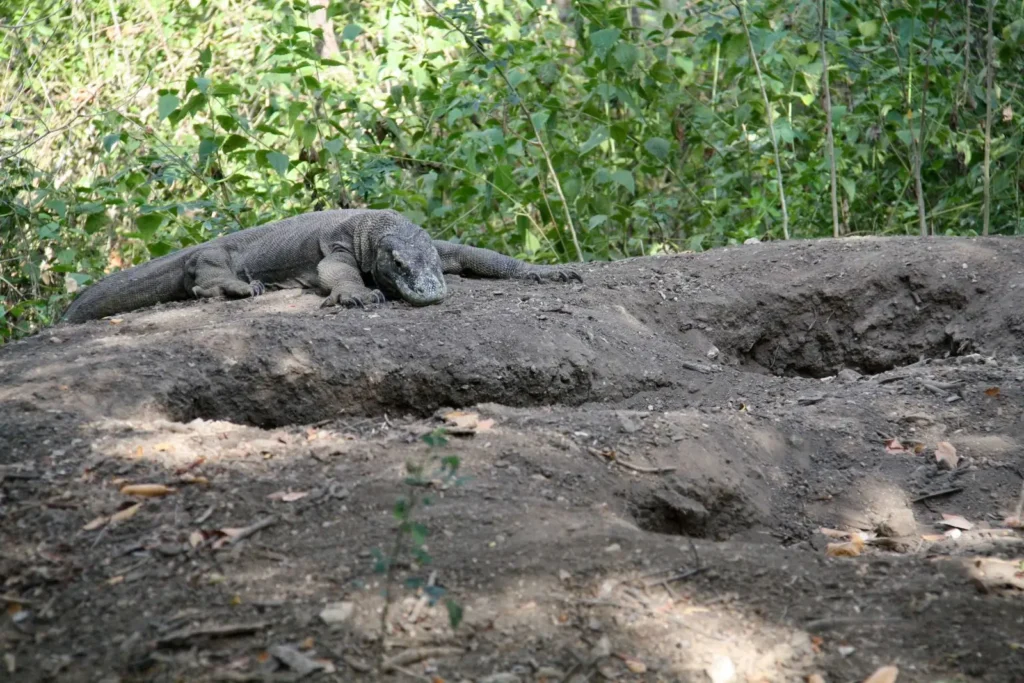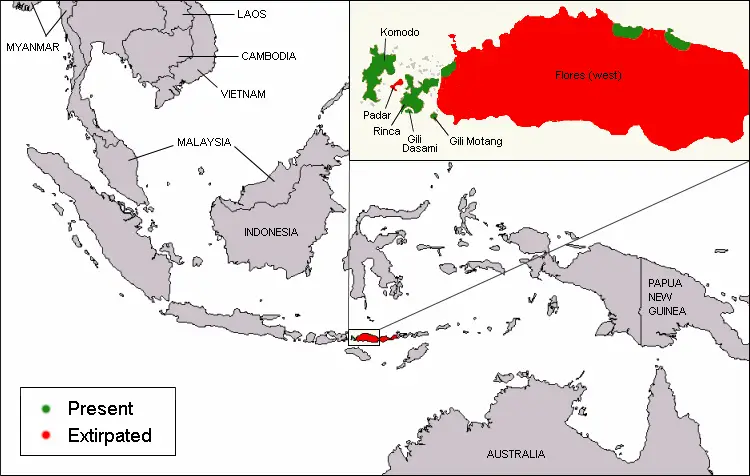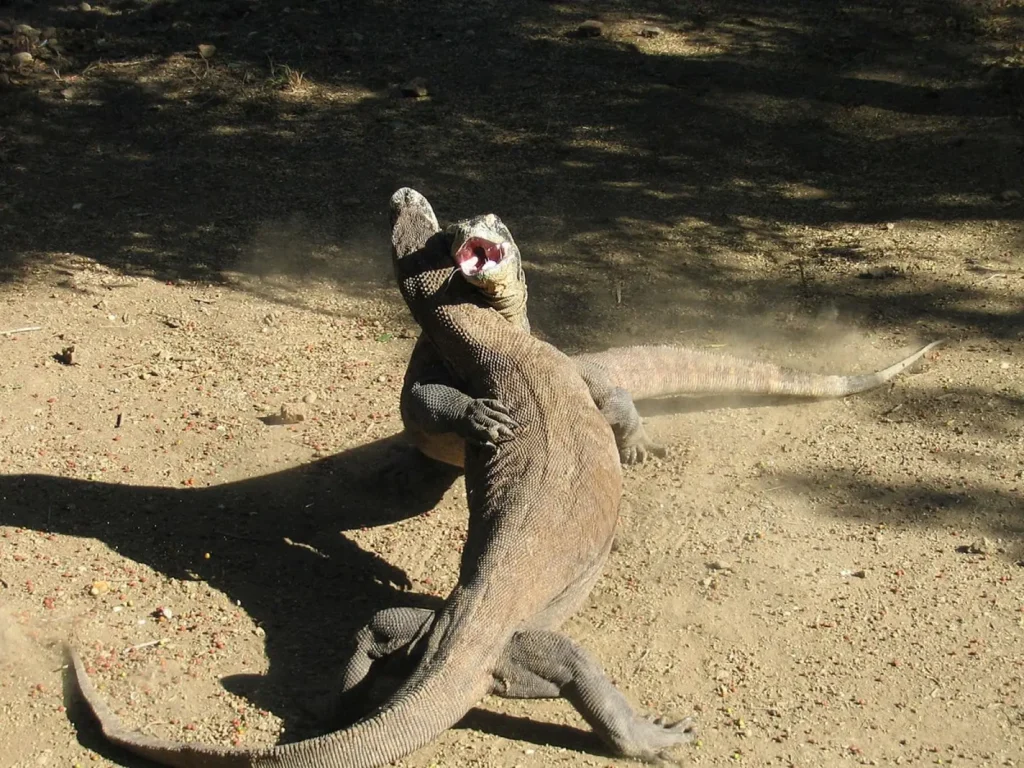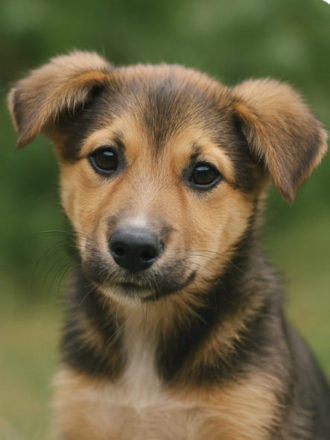Varan of Komodo (Varanus komodoensis) is the largest modern lizard that lives on several Indonesian islands. Due to its size and physical characteristics, this species is one of the most formidable predators on land. It is the only representative of the genus Varanuswhich is capable of hunting large animals such as deer, wild pigs, and even buffalo.

Classification and scientific name
• The Kingdom: Animals (Animalia)
• Type: Chordal (Chordata)
• Class: Reptilia
• Row: Lizards (Squamata)
• Family: Varanidae
• Gender: Varanus
• View: Varanus komodoensis
Physical characteristics
📌 Dimensions and weight
- Body length: up to 3 m
- Weight: up to 70 kg
🎨 Colors and features
The skin is gray or brown with yellowish spots
✔ Strong body with well-developed muscles and a large head
✔ Scales are hard, with strong spines on the tail
✔ Komodo boas have powerful limbs that allow them to run and dig
🦷 Characteristic features:
- Powerful jaws and long, pointed teeth for cutting through flesh
- Strong ability to attack quickly

Range and habitat
🔵 Spread
✔ He lives on the islands of Komodo, Rincha, Flores and Gili Motang in Indonesia.
✔ Their numbers are largely limited to these islands, where they live in natural conditions, as well as national parks.
🔴 Living environment
✔ Dry savannas, rocky slopes, and open grasslands. They can also be found in lowlands and on the coast.
✔ Komodo Varanians are adapted to hot climates with little water, and their pits and caves help keep them cool on hot days.
Lifestyle and behavior
🌟 Social structure
✔ Komodo dwarfs are solitary animals, but often gather in groups while feeding.
✔ Young animals usually live in trees, while adult animals spend most of their time on the ground.
🌟 Activity time
They are diurnal, active mainly in the morning and evening when the temperature is not too high.
At night, they seek shelter in burrows, caves, or under rocks, where they can hide from the heat.

Food and hunting
🍖 The main meal
- Komodo sheep hunt large animals such as deer, wild pigs, and buffalo, as well as smaller animals such as birds and reptiles.
- They are able to eat up to 80% of their body weight per feeding.
💪 Features of nutrition
✔ Komodo locusts are predators that hunt using sneaking tactics and quick attacks.
Their bite contains toxins that paralyze the victim, contributing to infection and death.
🍴 Hunting technology
✔ They usually hunt by sneaking, following their prey from a distance until they find the right moment to attack.
Protection and threats
⚠️ Main threats
✔ Decline due to habitat destruction and tourism.
Human hunting and climate change also affect the population.
📉 Security status:
✔ Komodo dragons are a vulnerable species listed in the Red List of the International Union for Conservation of Nature (IUCN).
Reproduction and life cycle
❤️ Reproduction:
- Komodo locusts lay their eggs in soft ground or in burrows where the temperature remains stable.
- Eggs are laid in groups of 15-30 eggs, and sometimes even up to 40.
❤️ Life span:
- They can live up to 30 years in the wild, although their life cycle in captivity can be longer.

Interesting facts about the Komodo sheep
The bite of the Komodo locust contains toxins that can cause infections in the victim, even if he or she has escaped.
They can reach speeds of up to 20 km/h, which is quite fast for their size.
✔ Komodo deer have a very good memory and are able to find their favorite hunting grounds even years later.
Conclusion
Varan of Komodo - is an impressive predator that plays an important role in the natural ecosystem of Indonesia. Its unique physical characteristics, enormous size, and ability to hunt large animals make it incredibly interesting to scientists and nature lovers around the world. 🦎🌿
